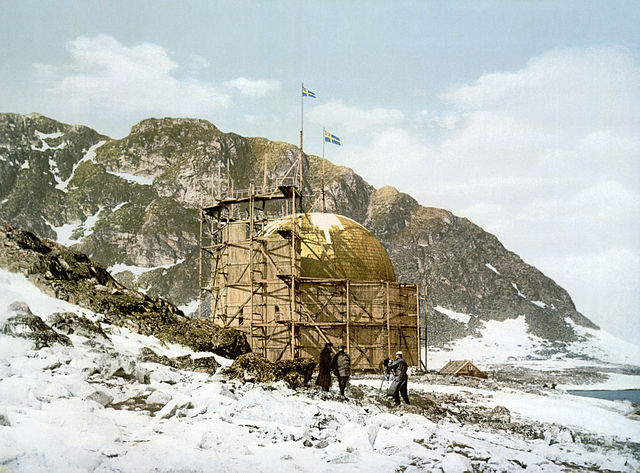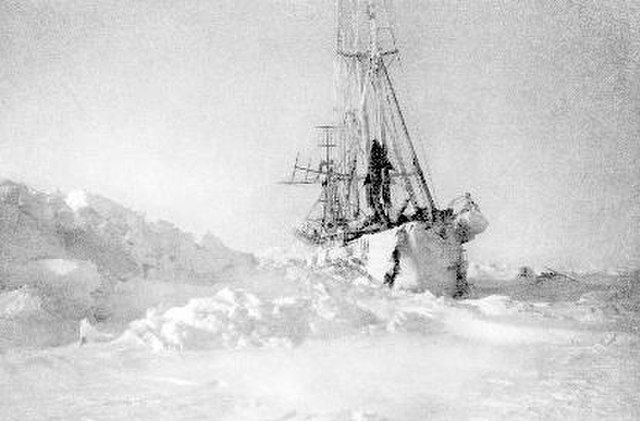Andrée's Arctic balloon expedition
Andrée's Arctic balloon expedition of 1897 was a failed Swedish effort to reach the North Pole, resulting in the deaths of all three expedition members, S. A. Andrée, Knut Frænkel, and Nils Strindberg. Andrée, the first Swedish balloonist, proposed a voyage by hydrogen balloon from Svalbard to either Russia or Canada, which was to pass, with luck, straight over the North Pole on the way. The scheme was received with patriotic enthusiasm in Sweden, a northern nation that had fallen behind in the race for the North Pole.
S. A. Andrée and Knut Frænkel with the balloon on the pack ice, photographed by the third expedition member, Nils Strindberg. The exposed film for this photograph and others from the failed 1897 expedition was recovered in 1930.
The station at Spitsbergen, from a photochrom print at the end of the nineteenth century
The explorers minutes before takeoff on 11 July
Frænkel (left) and Strindberg with the first polar bear shot by the explorers
The North Pole, also known as the Geographic North Pole, Terrestrial North Pole or 90th Parallel North, is the point in the Northern Hemisphere where the Earth's axis of rotation meets its surface. It is called the True North Pole to distinguish from the Magnetic North Pole.
Temporary research station of German-Swiss expedition on the sea ice at the Geographic North Pole. Drillings at the landing site at 90°N showed an average ice thickness of 2.5 metres on April 16, 1990
This pressure ridge at the North Pole is about 1 km long, formed between two ice floes of multi-year ice.
Nansen's ship Fram in the Arctic ice
Peary's sledge party at what they claimed was the North Pole, 1909. From left: Ooqueah, Ootah, Henson, Egingwah, and Seeglo.








